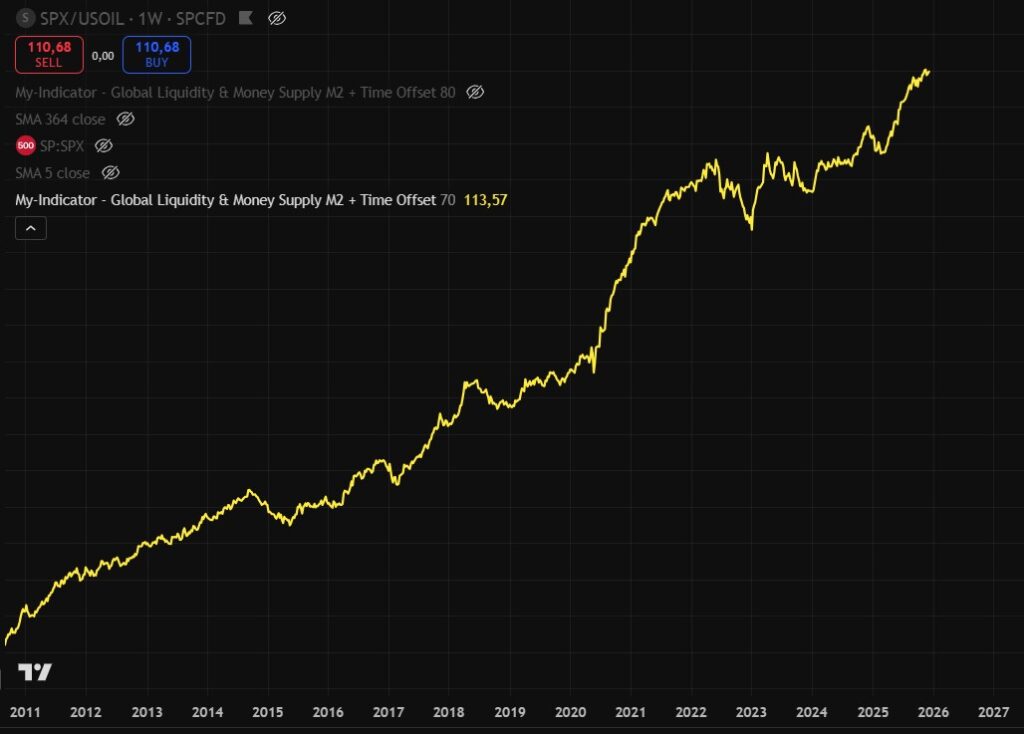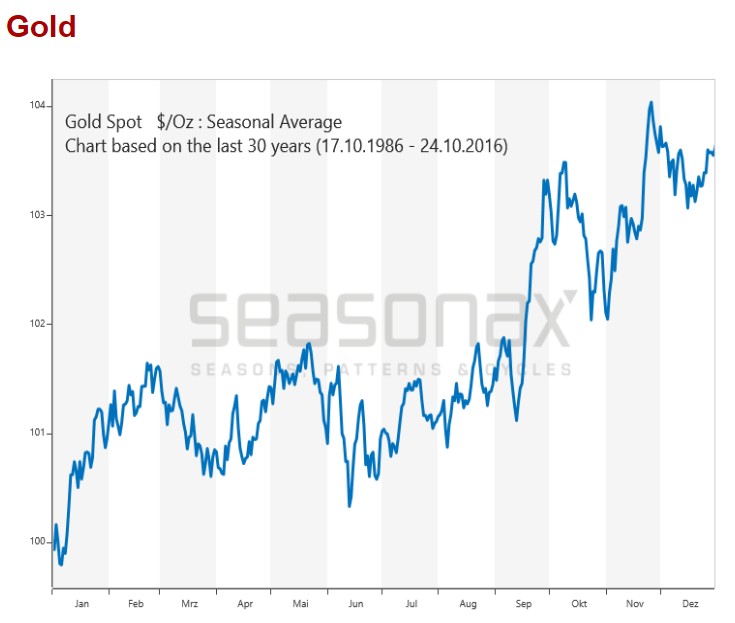What are the prospects for the price of gold by 2025?
Gold is often considered a barometer of uncertainty. If you're new to investing , understanding what makes it rise or fall will help you better assess whether it's a good fit for your portfolio . In this article, we'll first look at the fundamental forces behind its value, then the macroeconomic context and the signals to watch for to anticipate its trajectory towards the end of 2025. This article does not constitute investment advice.
Table of contents
Intrinsic Value of Gold: What Underlies Its Price
Rarity and limited supply
Gold is a precious metal with a limited supply. Unlike fiat currencies, which can be printed, gold cannot be created at will. This is one of the main factors influencing the price of gold .
Inflation hedge and weakened fiat currency
Gold is often viewed as a store of value during times of inflation or currency depreciation. When a central bank prints money or when the purchasing power of a currency declines, gold can act as a buffer. This is especially true when real bond yields are negative (low nominal rates or inflation ).
Industrial use, jewelry and physical demand
A significant portion of gold demand comes from the jewelry sector (jewelry) or industry (connectors, electronic components, dentistry). This physical demand acts as a structural support for the price, especially in major gold-consuming economies (India, China).
Monetary and historical role of gold
Gold has long been at the heart of the monetary system: gold standard, gold backing, etc. During the era of the gold standard, currencies were convertible into gold. Then, gradually, fiat currencies replaced it. But gold retains a symbolic role and an anchor of confidence. Over time, it has become a asset —that is, an asset to which investors turn in times of crisis or uncertainty.
Macroeconomic factors that influence the price of gold
Key rates and monetary policy (notably the FED)
Interest rates are a major driver for gold. When the Federal Reserve (FED) raises rates, it makes bonds more attractive, which can divert capital away from gold. Conversely, expectations of rate cuts or accommodative policies favor other assets, particularly those considered riskier, such as stocks or cryptocurrencies, but also gold.
In 2025, markets are pricing in several Fed rate cuts, fueling bullish expectations for gold.
However, if inflation remains stubbornly high (the “too hot” scenario), the Fed could delay these cuts, thus dampening gold’s momentum.
Money printing, quantitative easing and liquidity
Liquidity and monetary policy
There is currently no major quantitative easing (QE) program comparable to those of 2008 or 2020. However, the rate cuts already underway in 2025 have rekindled an expansion of the money supply, as reflected in global liquidity indicators (M2).

This reinjection of liquidity, even indirectly, acts as a support for gold, as it fuels fears of monetary dilution and increases the amount of money injected into global markets, including gold. In the event of a more pronounced economic slowdown, markets even anticipate a return to more accommodative measures, which could further amplify this favorable effect on the yellow metal.
Feeling “risk off” versus “risk on”
Gold is a risk-off par excellence: it benefits in phases of risk aversion (crises, uncertainty, volatility). Conversely, during periods of market euphoria (risk on), investors favor stocks, cryptocurrencies, or other assets with higher potential. Geopolitical events (tensions between major powers, conflicts, political crises) reinforce the feeling of flight to safe haven assets. Conversely, a return of global confidence, solid growth, or strong innovations can draw capital toward risky assets, to the detriment of gold.
Pressure on the US dollar and desensitization (de-dollarization)
Since gold is often priced in dollars , a depreciating dollar makes gold cheaper for holders of other currencies, fueling international demand. Conversely, a strong dollar weighs on gold. In 2025, geopolitical tensions and the diversification of central reserves into other assets (cryptocurrencies, alternative currencies) will fuel the debate about desensitization to the dollar , which could support gold.
Seasonality: gold at the end of the year
A study of gold's seasonal trends over 30 years (1986–2016) reveals cycles . The graph clearly shows that gold does not react uniformly throughout the year, but rather experiences more favorable periods:
- From January to February, the price generally increases steadily, driven by physical demand at the start of the year.
- From March to June, the trend becomes more irregular with correction phases. This period is historically weaker, marked by moderate demand.
- From July-August, the curve returns to an upward bias, with a first acceleration confirmed in September.
- From September to October, we observe marked volatility: after a strong rise, gold often experiences a temporary decline.
- Finally, from November to December, gold regains positive momentum and ends the year on a robust uptrend, as shown by the strong year-end surge on the chart.

In summary, historical data suggests that the most favorable period for gold is between mid-September and the end of January, with a marked peak in September and a sustained trend towards the end of the year. This seasonality is believed to be linked to increased demand for jewelry (India, China), the holiday season, and institutional portfolio repositioning. At the time of writing, we have indeed seen a strong surge in the price of gold in September 2025.
Comparison with stocks and cryptocurrencies at the end of the year
At the end of the year, equity markets often experience a “year-end rally” (Christmas effect), as investors rebalance their portfolios. This can favor stocks over safe-haven assets. Cryptocurrencies, on the other hand, remain sensitive to sentiment and risk appetite: if the mood is bullish, they can rise much more sharply than gold, but they are also more volatile.
If the macroeconomic environment turns uncertain or crisis-ridden, gold can outperform these asset classes. In 2025, gold's strong performance against stocks and cryptocurrencies shows that the "safe" sentiment has taken over.
Possible scenarios for the price of gold by the end of 2025
Here are some possible trajectories, with their triggers:
“Reinforced risk aversion” (bullish) scenario
- The FED announces earlier or more numerous rate cuts than expected → increase in the attractiveness of gold versus bonds.
- Inflation remains high or rises → investors flee to gold as a hedge.
- Geopolitical shocks (crises, conflicts, political uncertainty) stimulate safe-haven demand.
- Central banks continue to increase their gold reserves with sustained purchases.
- The dollar is weakening sustainably, favoring purchases outside the United States.
In this scenario, some forecasts predict gold will be in the $4,000–4,500 per ounce range by the end of 2025.
“Return of confidence / recovery of risky markets” scenario (moderate to bearish)
- The FED slows its cuts or postpones them if inflation persists → real rates remain attractive for traditional investments.
- Global growth is picking up, strengthening appetite for equities, emerging markets, and cryptocurrencies.
- Few major geopolitical shocks or resolution of tensions → less need for “refuge”.
- The dollar is strengthening, making gold more expensive for non-dollarized people.
- Flows into gold ETFs are slowing or even reversing.
Warning points and turning zones
- If expectations of rate cuts are disappointing.
- If confidence in the markets is suddenly restored.
Recommendations for a beginner and practical advice
Steps to Track the Gold Market
- Monitor FED announcements & inflation commentary.
- Observe gold ETF flows (weekly/daily statistics).
- Track the performance of the dollar (USD indices) and movements in major currencies.
- Take into account major geopolitical events (risks, crises, conflicts).
- Compare with stock and crypto markets to spot strong divergences.
Safety advice
Do not allocate an excessive portion of your portfolio to gold, as it is a non-yielding asset (no dividend, no coupon).
Gold often acts as a diversification complement.
Regularly reassess your position according to macro developments.
Conclusion
The price of gold is subject to a complex interaction between structural factors (scarcity, industrial use, monetary role) and cyclical forces (monetary policy, expectations, sentiment, global context). By the end of 2025, two trajectories appear credible:
An upward trajectory if inflation persists, if the Fed opens the way to rate cuts and if uncertainty dominates: in this case, gold could aim for new highs above $4,000 an ounce.
A moderate or consolidation trajectory if economic conditions normalize, with a return of confidence towards risky assets.
Seasonality at the end of the year could bring a slight favorable bias to gold (particularly in November-December), especially if institutional flows remain positive. Finally, for a novice investor, gold has a stabilizing and hedging role.
Investments in cryptocurrencies are risky. Crypternon could not be held responsible, directly or indirectly, for any damage or loss caused following the use of a property or service put forward in this article. Readers must do their own research before undertaking any action and investing only within the limits of their financial capacities. Past performance does not guarantee future results. This article does not constitute an investment advice.
Certain links of this article are sponsorship links, which means that if you buy a product or you register via these links, we will collect a commission on the part of the sponsored company. These commissions do not train any additional cost for you as a user and certain sponsorships allow you to access promotions.
AMF recommendations. There is no guaranteed high yield, a product with high performance potential implies a high risk. This risk taking must be in line with your project, your investment horizon and your ability to lose part of this savings. Do not invest if you are not ready to lose all or part of your capital.
All our articles are subject to a rigorous verification of the facts. Each key information is verified manually from reliable and recognized sources. When we cite a source, the link is systematically integrated into the text and highlighted by a different color, in order to guarantee transparency and allow the reader to consult the original documents directly.
To go further, read our pages legal notices , privacy policy and general conditions of use .

